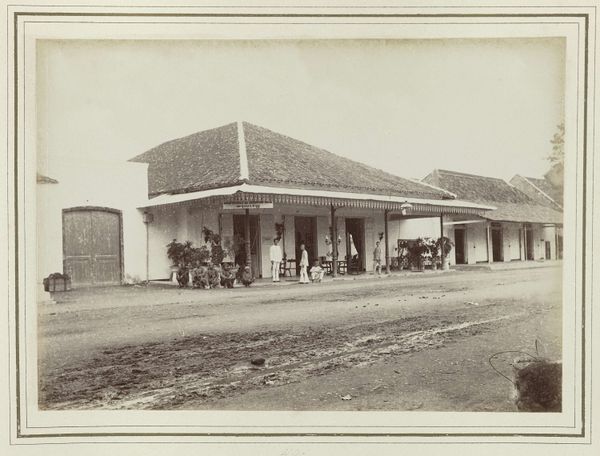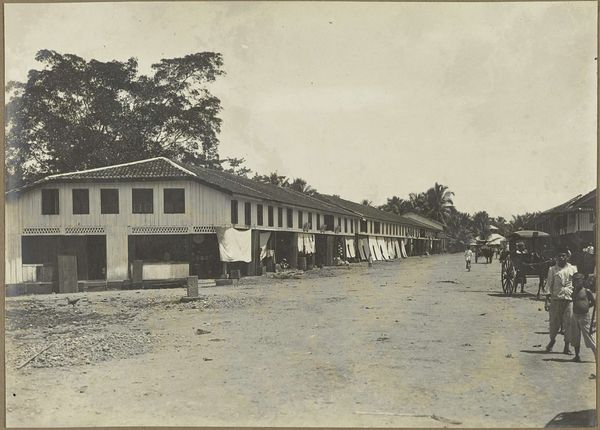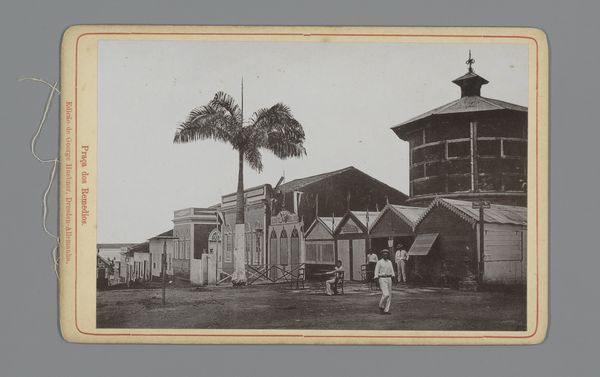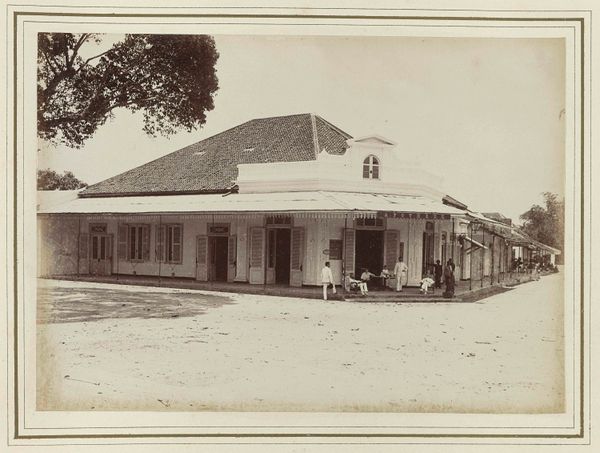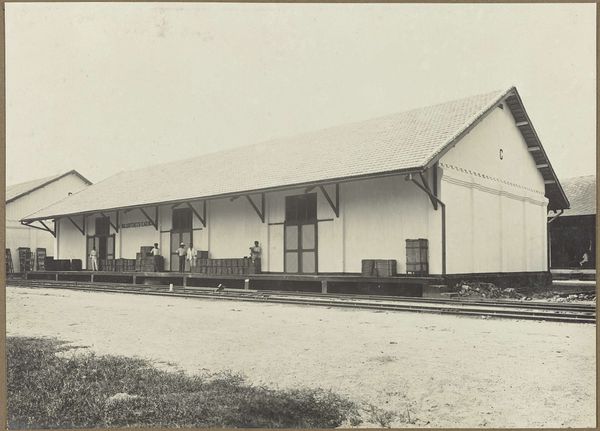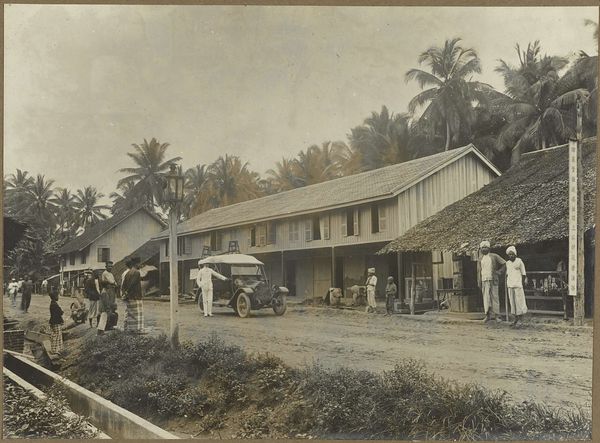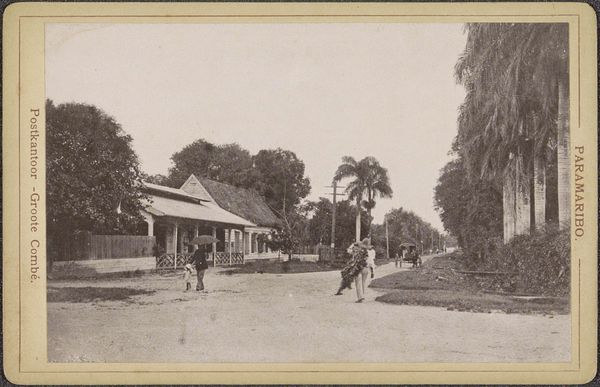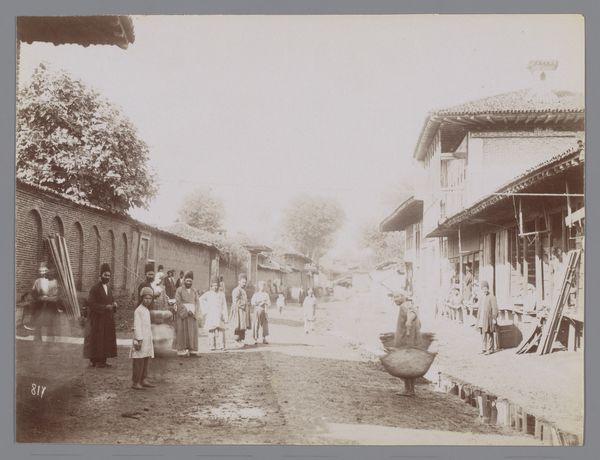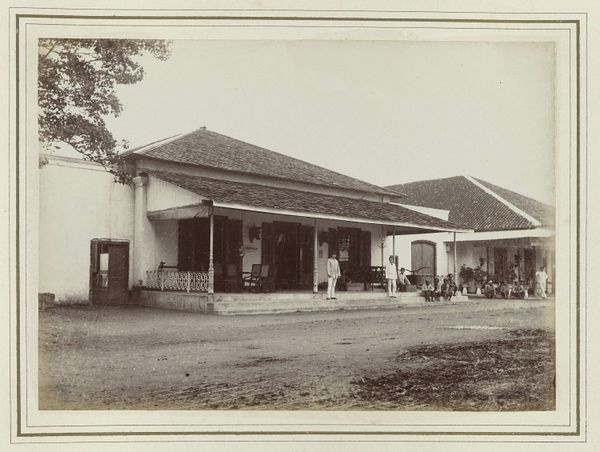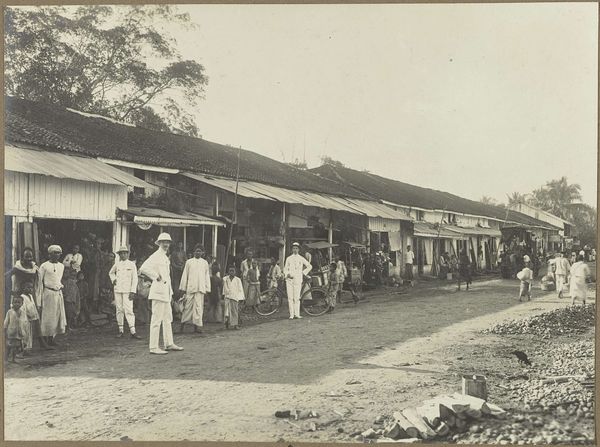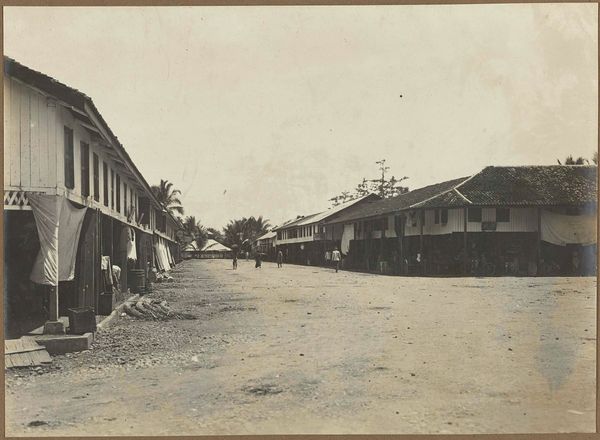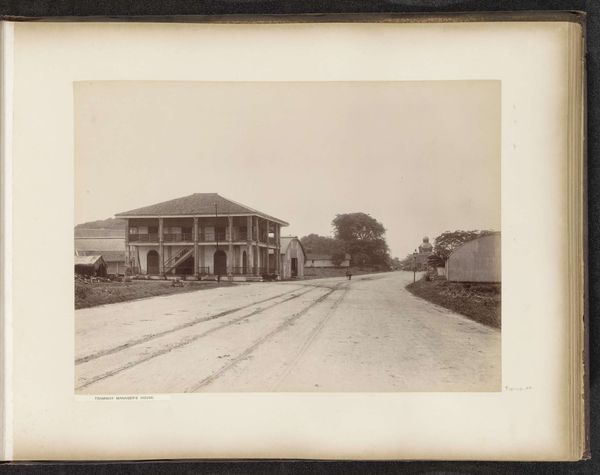
Mensen bij de weegbrug en locomotiefremise van suikerfabriek Meritjan te Kediri op Java c. 1925 - 1930
0:00
0:00
photography, gelatin-silver-print
#
landscape
#
archive photography
#
photography
#
historical photography
#
gelatin-silver-print
#
realism
Dimensions: height 297 mm, width 450 mm
Copyright: Rijks Museum: Open Domain
Curator: Here we have an evocative photograph by Isken, taken sometime between 1925 and 1930. It's titled "People at the Weighbridge and Locomotive Shed of the Meritjan Sugar Factory in Kediri, Java." Editor: My first impression is the stillness of it all. Even with people present, there's a quiet monumentality conveyed through the industrial architecture. The neutral palette amplifies the feeling of a bygone era, a document frozen in time. Curator: Absolutely. The composition itself is quite striking, wouldn't you agree? Note how the tall chimney in the left subtly mirrors the gable roof structure. What resonates for me is the depiction of industry's reliance on manual labor during the colonial era, with its symbolic weight that reverberates even today. Editor: The evidence is embedded in every material element – the rough-hewn lumber scattered about, the railway lines that seem both utilitarian and a tool for extraction, and the texture of the gelatin-silver print itself. It underscores how intertwined these colonial sugar factories were with the everyday lives and bodies of local populations. One really wonders about working and living conditions in such factories. Curator: Colonial factories were power symbols, indeed, often carrying multiple and contradicting interpretations. It presents an external facade of order and progress whilst simultaneously reminding one of extraction and dependency. Do you see that group of people huddled next to the shed? The pose speaks of enforced stillness. Editor: It begs questions about the relationships between colonizer and colonized and invites consideration of who benefited from this industry. Curator: And while the photo itself documents a specific place and time, it also speaks to universal themes of labor, industrialization, and their legacies. Editor: For me, lingering on this image highlights not just a historical scene but also invites a critical look at our own participation in similar global systems today through the products we consume, whether or not these reflect post-colonial or even neocolonial frameworks. Curator: It is an indelible reminder of how our present is intrinsically shaped by our past. Editor: Indeed. And as this gelatin-silver print physically embodies that intersection of materials and experience, its historical value cannot be overstated.
Comments
No comments
Be the first to comment and join the conversation on the ultimate creative platform.
